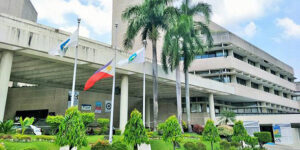
The Management Association of the Philippines (MAP) recently urged the government to focus on improving the mass transit systems in Metro Manila instead of concentrating on building elevated toll roads to solve the traffic situation.
The business group noted that proposals for elevated toll roads have surfaced amid the government’s struggle to solve the traffic congestion in what is considered one of the most densely populated areas in the country, composed of 16 cities and one municipality.
According to an estimate by the World Population Review website, Metro Manila has 14,941,953 residents this year.
“Having elevated toll roads is a quick fix that may offer traffic relief, albeit short term, as they ultimately fail to address the underlying issues of sustainability, equity, and environmental impact,” the MAP said in a statement.
“The Braess Paradox, and similarly, the induced demand phenomenon have proven time and again that adding more road space only attracts more cars that will soon choke the new road space with severe traffic congestion,” it added, referencing and explaining the phenomenon named after German mathematician Dietrich Braess.
MAP said prioritizing investments in mass transit systems presents a more viable and sustainable solution to Metro Manila’s traffic problem. It added that this approach also falls in line with the National Economic and Development Authority’s National Transport Plan and the business group’s holistic transportation plan, under which mass transportation is prioritized to move people instead of cars.
“A well designed mass transport network, including efficient bus rapid transit systems, light rail transit and metro systems, can significantly move more people and reduce congestion by drastically reducing private car usage, while minimizing greenhouse gas emissions and improving air quality,” the MAP said.
In a study in 2017, the Japan International Cooperation Agency tracked economic losses of P3.5 billion daily due to the traffic situation in the country’s capital. Without intervention, this is projected to balloon to P5.4 billion per day by 2035.
Building roads may seem like it is part of building a transportation system, but it actually isn’t. However, after we have seen government building so many roads over the past decade or so, our public transportation system remains basically the same and the masses still have difficulty getting from point A to point B, even when simple tasks just like getting to and from work are concerned.
If our government and its officials can somehow shift their focus from simply building roads to planning for mass transport systems, based on the JICA estimates alone, so many Filipinos can benefit from it when we all waste less time in traffic, which means we can attend to more productive matters that ultimately contribute to growing our economy and the country.*







